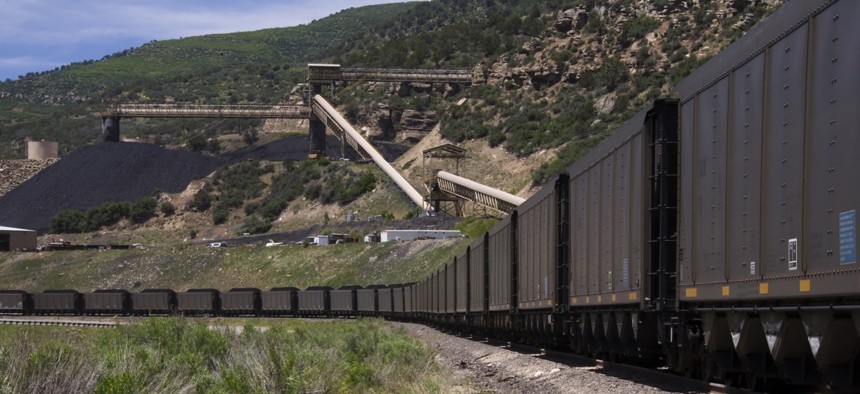Colorado Governor Urges Feds to Help Save State’s Embattled Coal Mines

Colorado has dropped to the 11th coal producing state, according to the U.S. Energy Information Administration. Greg Randles / Shutterstock.com

Connecting state and local government leaders
A recent court ruling is putting 220 mining jobs at risk.
Colorado Gov. John Hickenlooper is urging U.S. Interior Secretary Sally Jewell to do “everything possible” to keep a coal mine in northwestern Colorado from shutting down after a federal judge recently ruled the government illegally approved the mine’s expansion in 2007.
On May 8 a federal District Court judge in Denver ruled that the Interior Department’s Office of Surface Mining Reclamation and Enforcement (OSMRE) “neither involved the public nor took a hard look at the environmental impacts” of expansion plans at the Colowyo and Trapper mines, both located in the northwestern part of the state.
The judge ordered the OSMRE to conduct a supplemental environmental assessment for the Colowyo Mine, provide public notice and the opportunity for public comment and render a new decision within 120 days or risk the initial approval being voided.
That would essentially shut down the mine, the state contends, forcing the layoff of 220 miners, costing the regional economy $200 million, eliminating $12 million a year in taxes and royalties and disrupting an affordable source of coal for the nearby Craig Station Power Plant.
In a letter late last week, Hickenlooper urged Jewell to intervene either by appealing the judge’s ruling or petitioning for an extension of the four-month deadline for a new environmental assessment and decision by the OSMRE.
“Given the importance of this mine to the economies of the region, I ask that you do everything possible to respond to the judge’s order and remedy the situation as expeditiously as possible,” Hickenlooper wrote on Friday.
Denver-based WildEarth Guardians, the environmental group that challenged the OSMRE’s 2007 approvals, questioned the governor’s actions.
“It's unfortunate that rather than call on the Interior Department to do its job right and come clean with the American public on the environmental impacts of coal mining, he's instead reciting coal industry talking points,” said WildEarth’s climate and energy program director, Jeremy Nichols.
“Our governor seems more concerned with appeasing the fossil fuel industry than he is about protecting Colorado's clean air and public lands.”
In a public notice last week in the Herald Times newspaper in Rio Blanco County, the OSMRE announced it will conduct a new environmental assessment addressing “surface and ground water; air quality; climate change and greenhouse gases; geology; soils; topography; recreation; fish and wildlife; cultural resources; social economic composition; and environmental justice.” It scheduled a June 10 open house in Craig.
A top 10 coal mining state as recently as 2008, Colorado has since dropped to 11th in the nation, losing more than 450 high-paying jobs in the rural Delta area south of Craig, where community leaders are scrambling to diversify the local economy.
The state since 2010 has actively shifted power plants over to cleaner-burning and more plentiful natural gas, partially leading to a coal-production drop of more than 40 percent since the state’s peak in 2004, according to the U.S. Energy Information Administration.
Hickenlooper, a former oil and gas geologist, has worked closely with the drilling and mining industries to keep the hydrocarbons flowing in the 7th-ranked energy production state in the nation. His predecessor and fellow Democrat, Bill Ritter, was a more outspoken champion of renewables with his “New Energy Economy” platform.
As of December, according to the USEIA, Colorado still derived 59 percent of its electricity from coal-fired power plants, compared to 24 percent from natural-gas fired plants and 17 percent from renewable sources such as wind, solar and hydroelectric. State law mandates investor-owned utilities must meet a 30-percent renewable standard by 2030.

NEXT STORY: Southern California Water Agencies Spar Over Making Conservation Program Nation’s Largest




